Nordheim, Texas. (original) (raw)
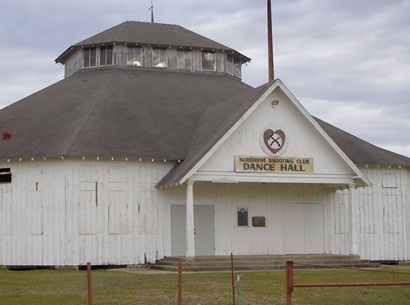
Nordheim Shooting Club Dance Hall
Photo Courtesy Will Beauchamp, October 2008
History in a Pecan Shell
In the 1880s much of land around present-day Nordheim was owned by H. Runge & Co. of Cuero. With the arrival of the railroad (The San Antonio and Aransas Pass) in 1895, a townsite was platted and a post office opened the following year.
The president of Ringe and Co. suggested the name of his hometown back in Germany and it has been Nordheim ever since. St. Paul's Evangelical Lutheran Church organized in 1896 and the town gained a passenger depot in 1901.
Nordheim got telephone service by 1900 and a newspaper and hotel in 1902. The town�s predominant German population formed numerous social organizations including a Sons of Hermann lodge as well as a shooting club and a brass band. A bandstand constructed on Pilot Knob (the highest point in DeWitt County) became the town�s social center.
From an estimated population of 122 people in 1902, the town grew to 400 residents by 1915. Nordheim incorporated in 1917 after the state proposed a law allowing only incorporated towns to operate saloons. By 1927 the estimated population peaked at 600 and Nordheim organized its own Independent School District, drawing in other schools from surrounding communities.
On May 6, 1930, a tornado struck the town, killing eighteen people. The devastation of the tornado and the onset of the Great Depression set the town into a decline and a year after the tornado struck the population had decreased to 400.
By the early 1950s it had risen to 477 but by the mid 1980s it had returned to 369. The Nordheim cotton gin managed to stay in operation until 1970. The Nordheim Brass Band, thought to be the last �continuous pioneer German brass band in Texas� disbanded in the 1970s. The movie Paris, Texas, was partially filmed in Nordheim in 1984.
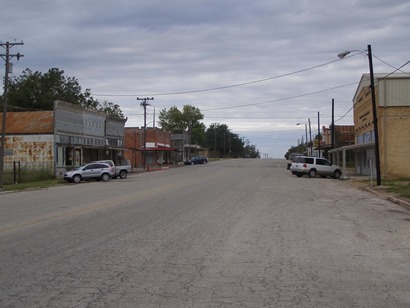
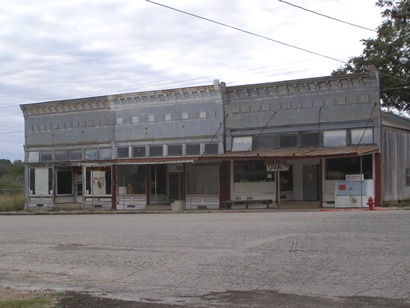

Nordheim Shooting Club Dance Hall
Photo Courtesy Will Beauchamp, October 2008
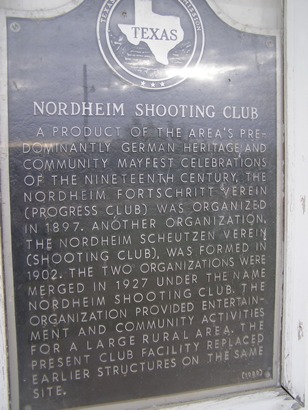
Nordheim Shooting Club historical marker
Photo Courtesy Will Beauchamp, October 2008
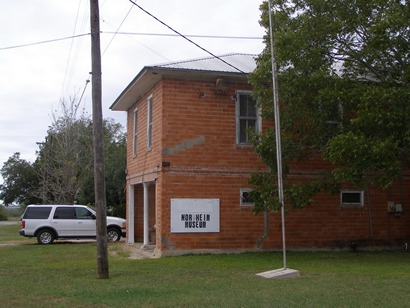
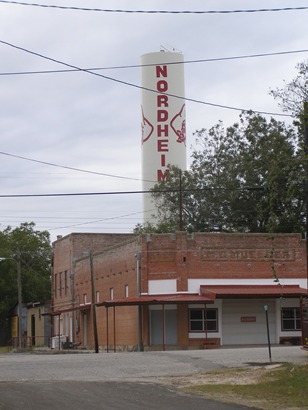
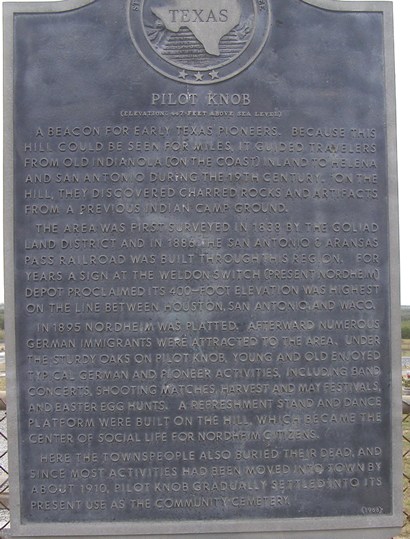
Pilot Knob historical marker
on FM 239
Photo Courtesy Will Beauchamp, October 2008
Historical Marker
Pilot Knob
A beacon for early Texas pioneers. Because this hill could be seen for miles, it guided travelers from Old Indianola (on the coast) inland to Helena and San Antonio during the 19th century. On the hill, they discovered charred rocks and artifacts from a previous Indian campground.
The area was first surveyed in 1838 by the Goliad Land District and in 1886 the San Antonio and Aransas Pass Railroad was built through this region. For years a sign at the Weldon Switch (present Nordheim) Depot proclaimed its 400-foot elevation was highest on the line between Houston, San Antonio, and Waco.
In 1895 Nordheim was platted. Afterward numerous German immigrants were attracted to the area. Under the sturdy oaks on Pilot Knob, young and old enjoyed typical German and pioneer activities, including band concerts, shooting matches, harvest and May festivals, and Easter egg hunts. A refreshment stand and dance platform were built on the hill, which became the center of social life for Nordheim citizens.
Here the townspeople also buried their dead, and since most activities had been moved into town by about 1910, Pilot Knob gradually settled into its present use as the community cemetery.
1968

Texas Escapes, in its purpose to preserve historic, endangered and vanishing Texas, asks that anyone wishing to share their local history, stories, landmarks and vintage/historic photos, please contact us.